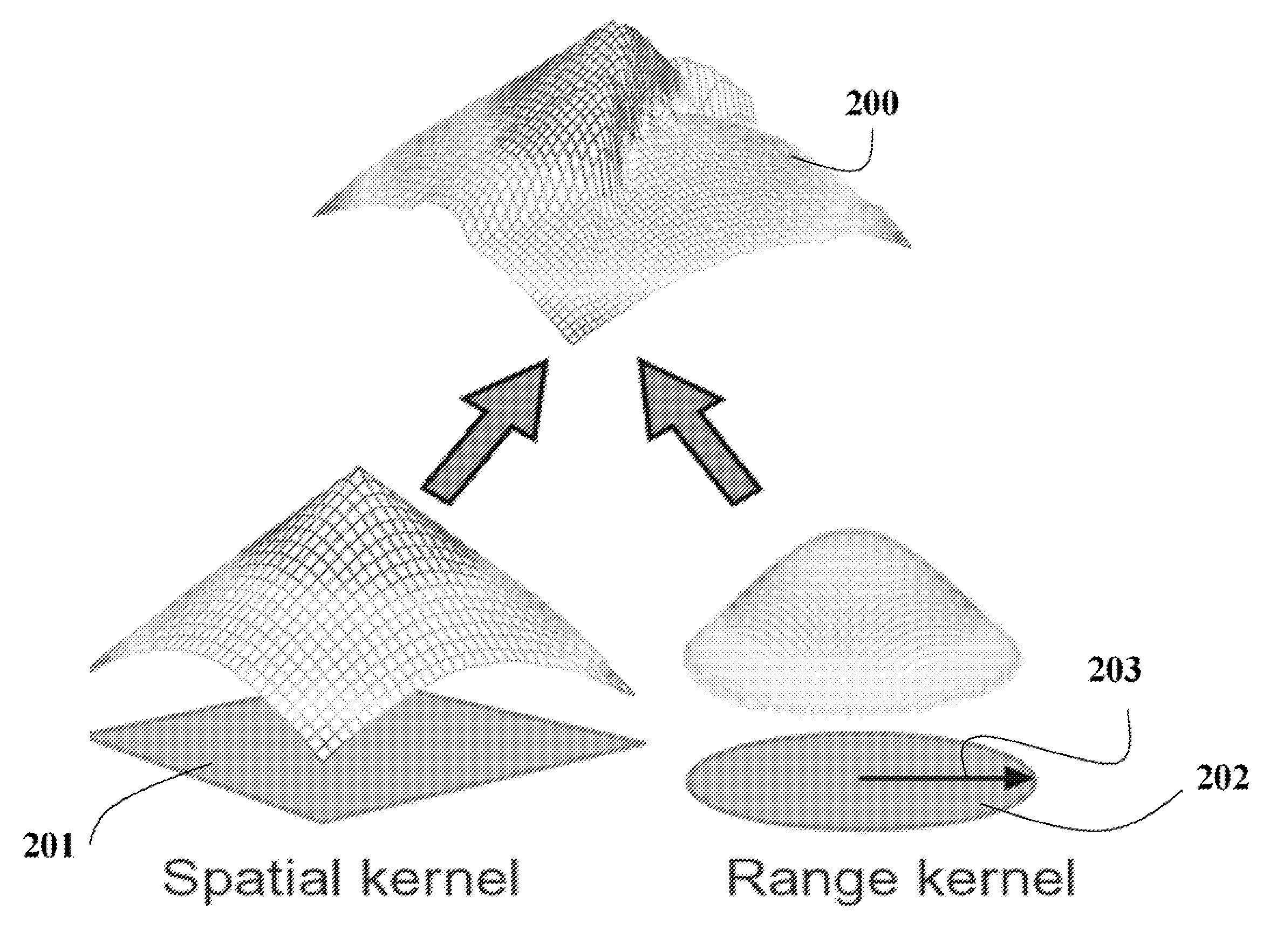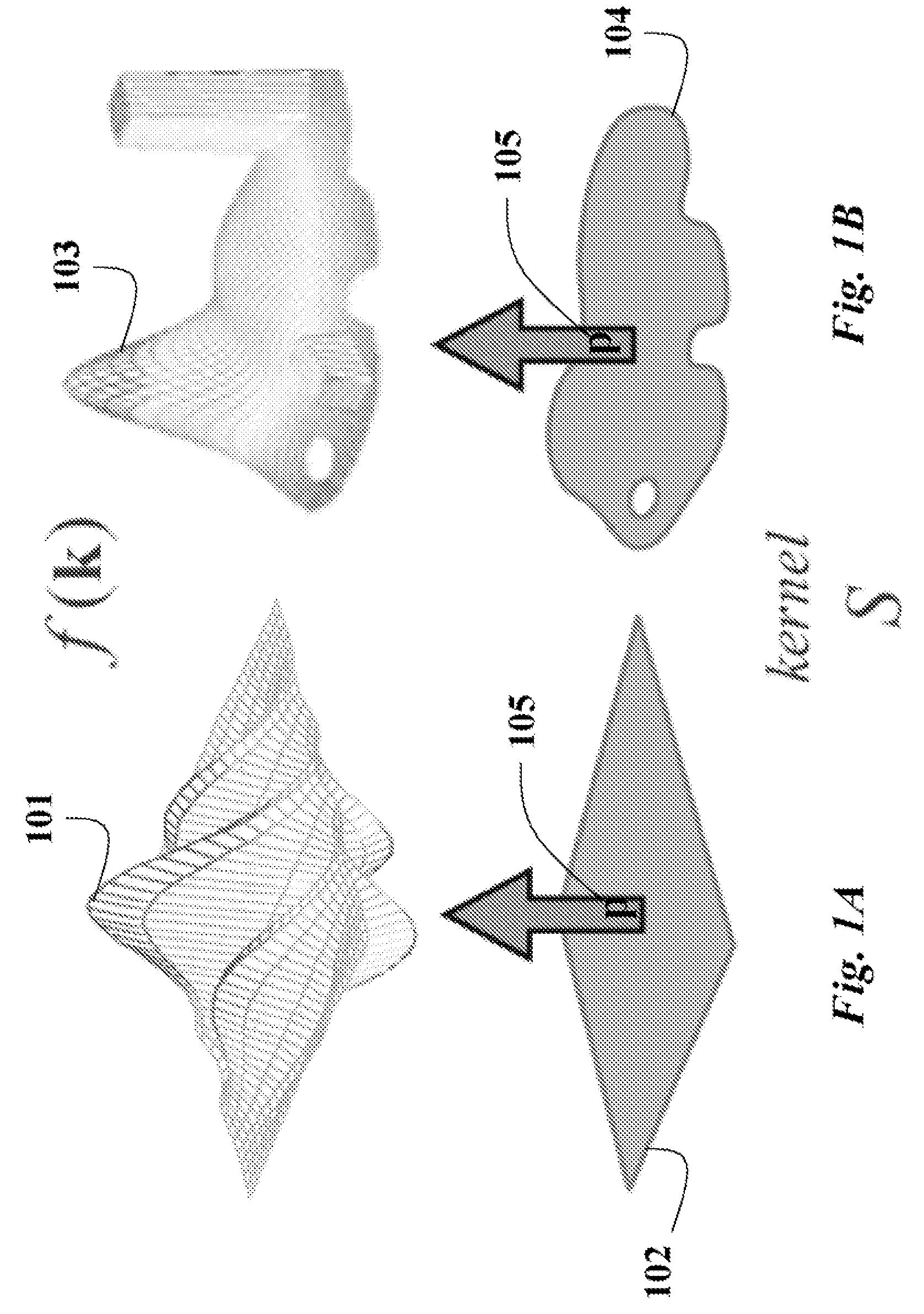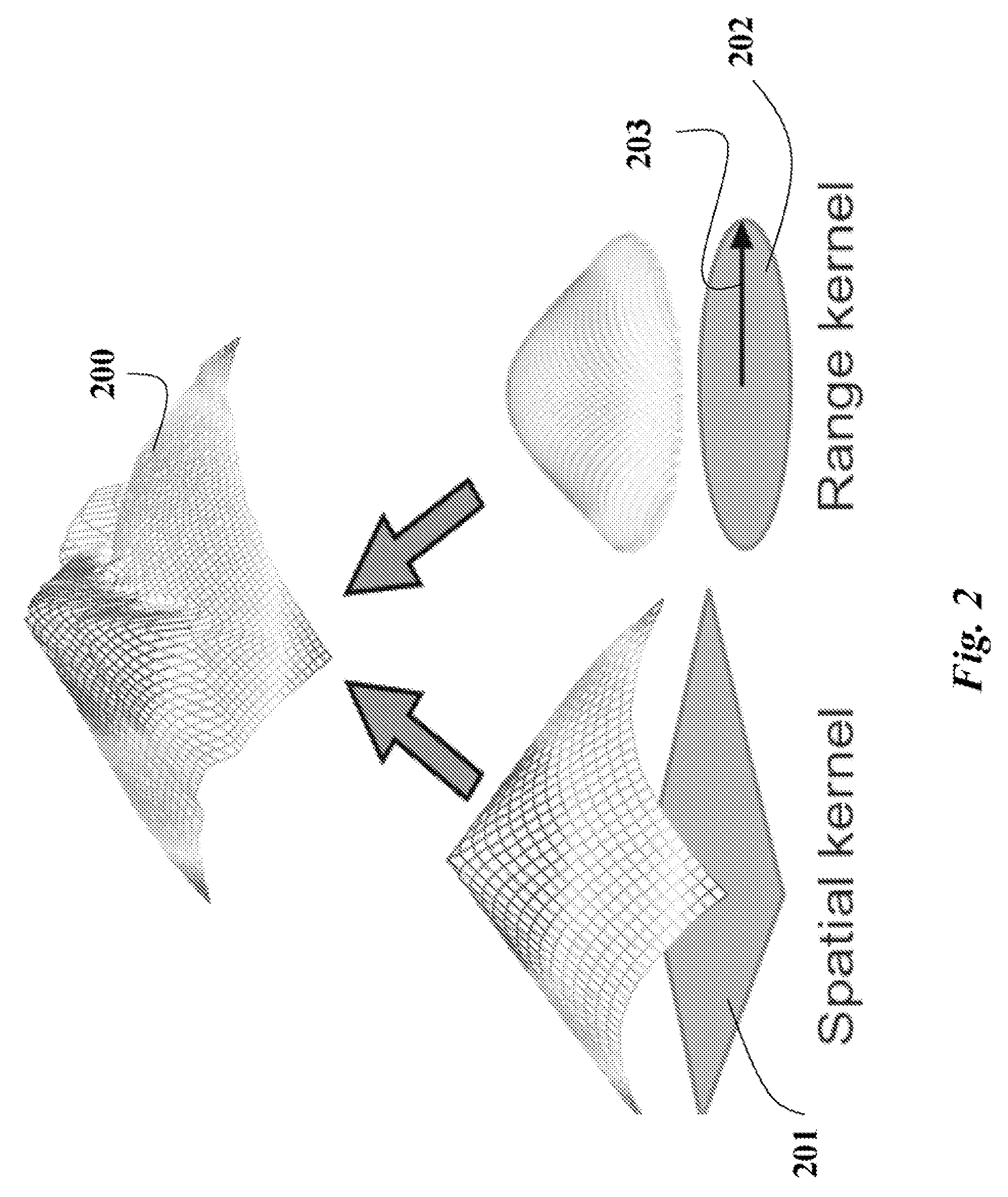Method for filtering images with bilateral filters
a filter and image technology, applied in the field of filtering data, can solve the problems of large number of multiplications, computationally demanding filtering, and limited technique to gaussian filter, so as to reduce the total number of operations, avoid redundant operations, and reduce the effect of memory consumption
- Summary
- Abstract
- Description
- Claims
- Application Information
AI Technical Summary
Benefits of technology
Problems solved by technology
Method used
Image
Examples
Embodiment Construction
[0022]FIG. 6 shows a method for filtering an input image Ii 601 to produce an output image Io 602 according to an embodiment of the invention. First, a set of power images I1, I2, I3, . . . , 611 are generated 610 from the input image 601. In the power images, In, the pixel intensities are raised to a power n or multiplied by each other, i.e., I1(p)=Ii(p), I2(p)=Ii(p)Ii(p), and I3(p)=Ii(p)Ii(p)Ii(p). The number of power images that are used depends on the number of terms in a Taylor expansion that is used to approximate an application of a range filter portion of a bilateral filter, see below.
[0023]A spatial filter 201 is applied to the set of power images 611 to determine filter responses 621. The application of the spatial filter can be performed as a sum of a set of separable low-dimensional filters. The responses 621 are combined 630 on a pixel-by-pixel basis to produce the bilaterally filtered output image 602. The combining can include multiplication and addition as describe b...
PUM
 Login to View More
Login to View More Abstract
Description
Claims
Application Information
 Login to View More
Login to View More - R&D
- Intellectual Property
- Life Sciences
- Materials
- Tech Scout
- Unparalleled Data Quality
- Higher Quality Content
- 60% Fewer Hallucinations
Browse by: Latest US Patents, China's latest patents, Technical Efficacy Thesaurus, Application Domain, Technology Topic, Popular Technical Reports.
© 2025 PatSnap. All rights reserved.Legal|Privacy policy|Modern Slavery Act Transparency Statement|Sitemap|About US| Contact US: help@patsnap.com



